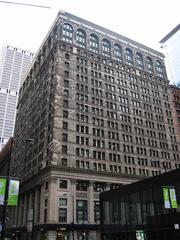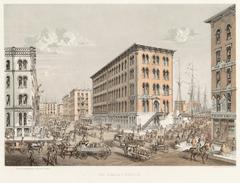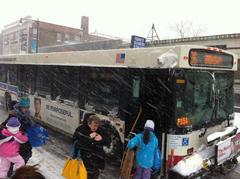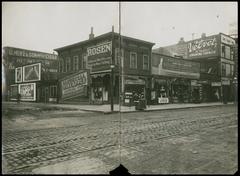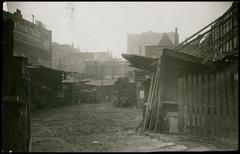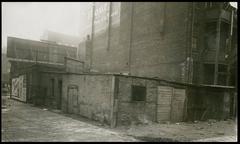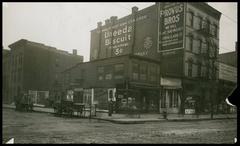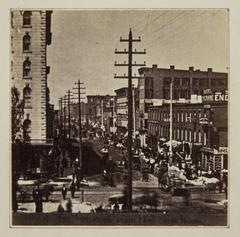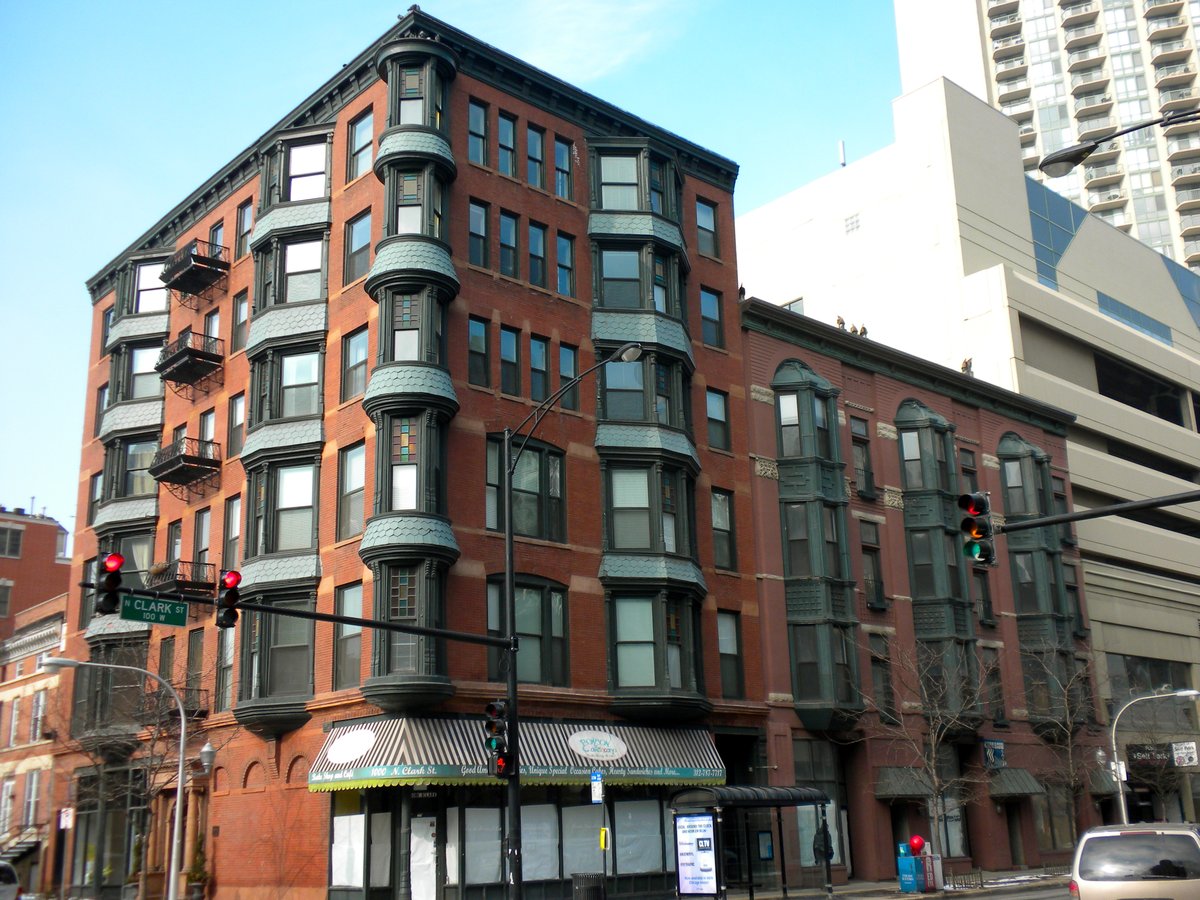
Clark Street Chicago Visiting Hours, Tickets, and Historical Sites Guide
Date: 14/06/2025
Introduction
Clark Street, one of Chicago’s most iconic thoroughfares, weaves together a rich narrative of history, culture, architecture, and urban life. Named for Revolutionary War hero George Rogers Clark, this street has been a central artery of Chicago since the 1830s, connecting the city’s early settlements to its vibrant northern neighborhoods. Over time, Clark Street has witnessed the city’s evolution—from its frontier beginnings and the devastation of the Great Chicago Fire, to the flourishing of immigrant communities and the emergence of dynamic neighborhoods like Andersonville, Old Town, and Lincoln Park.
Today, Clark Street is more than a historic passage; it is a thriving corridor where 19th-century architecture meets modern-day culture. Visitors can enjoy renowned festivals such as the Chicago Pride Parade and Andersonville’s Midsommarfest, explore independent shops and theaters, and experience a diverse culinary landscape. Accessibility is prioritized through well-connected public transit, wheelchair-friendly venues, and a range of guided tours for those keen to delve deeper into Chicago’s past and present.
This guide provides essential visitor information, including visiting hours, ticketing for major attractions, transportation tips, top photo spots, and recommendations for nearby sites. For updated details and further resources, consult official sites such as History Curator, Your Chicago Guide, and Chicago.gov.
Table of Contents
- Discover Clark Street Chicago: Your Ultimate Visitor Guide
- Early Development and Urban Growth
- Clark Street and the Great Chicago Fire
- Immigration, Neighborhoods, and Cultural Diversity
- Architectural Landmarks and Urban Transformation
- Economic and Social Significance
- Practical Visitor Information
- Frequently Asked Questions
- Preservation and Landmark Status
- Modern-Day Clark Street: A Living Legacy
- Exploring Clark Street Chicago: Visiting Hours, Tickets, and Historic Neighborhoods
- Discover the Best Clark Street Chicago Attractions: Historic Sites, Cultural Venues, and Visitor Information
- Discovering the Clark Street Monument: A Chicago Historical Landmark
- Summary and Final Recommendations
- Sources
Discover Clark Street Chicago: Your Ultimate Visitor Guide
Early Development and Urban Growth
Clark Street, established in the 1830s and named after George Rogers Clark, quickly became a pivotal north-south route in Chicago’s early development. It connected the original settlement near the Chicago River with emerging northern neighborhoods and soon blossomed into a commercial hub with shops, taverns, and boarding houses (History Curator).
Clark Street and the Great Chicago Fire
The Great Chicago Fire of 1871 devastated much of Clark Street’s original architecture. Nevertheless, the street’s importance spurred rapid rebuilding with fire-resistant materials, ushering in new architectural styles. Notable survivors, such as the Old Chicago Water Tower, remain as enduring symbols of resilience (Your Chicago Guide).
Immigration, Neighborhoods, and Cultural Diversity
Clark Street has long been a center for immigrant communities—German, Irish, Swedish, Eastern European, and Latin American—each leaving distinct marks on the neighborhoods. The area once known as “German Broadway” was a commercial heart for the German-American population, with sites like the historic Germania Club reflecting this heritage (Chicago.gov).
Architectural Landmarks and Urban Transformation
From 19th-century row houses to modern high-rises, Clark Street’s architecture tells a story of transformation. Key sites include:
-
Chicago History Museum (1601 N. Clark Street):
- Hours: Tuesday–Sunday, 9:30 AM–4:00 PM; closed Mondays
- Tickets: $19 adults, $15 seniors, $12 students, free for children under 12
- Offers permanent and rotating exhibits, guided tours, and educational programs (Your Chicago Guide)
-
Clark Street Bridge (Chicago River):
- Built in 1929, this Chicago-style bascule bridge is open to pedestrians and provides excellent city and river views (Historic Bridges).
Economic and Social Significance
Clark Street has been a commercial and social hub for over a century, hosting department stores, theaters, and events such as the Chicago Pride Parade and Andersonville’s Midsommarfest (Choose Chicago).
Practical Visitor Information
Getting There and Accessibility
- Transit: Served by CTA buses, Brown Line ‘Clark/Lake’ and Red Line ‘Clark/Division’ stations, and the 24/7 CTA 22 Clark bus (CTA Official Site).
- Accessibility: Major attractions and sidewalks are wheelchair accessible.
Nearby Attractions
- Lincoln Park Zoo (free admission)
- Old Town Historic District
- Diverse dining, including Chicago-style pizza, international, and vegetarian options
Guided Tours and Events
Walking and bike tours focusing on history, architecture, and food are available from several local operators. Advance booking is recommended.
Photographic Spots
- Clark Street Bridge (river views)
- Old Chicago Water Tower
- Historic districts in Old Town and Lincoln Park
Frequently Asked Questions
Q: What are Clark Street’s visiting hours?
A: Clark Street is open 24/7, but attractions like the Chicago History Museum are open Tuesday–Sunday, 9:30 AM–4:00 PM.
Q: Is the Clark Street Bridge open to pedestrians?
A: Yes, it is pedestrian-friendly and offers excellent photo opportunities.
Q: Do I need tickets to visit Clark Street?
A: No ticket is required for the street itself; museums and some tours require tickets.
Q: Are guided tours available?
A: Yes, walking and biking tours are offered by local companies.
Q: What are some nearby attractions?
A: Lincoln Park Zoo, Old Town Historic District, and many dining establishments.
Preservation and Landmark Status
Clark Street includes several official landmarks protected by city ordinance, such as the Clark Street Bridge and historic buildings in neighborhoods like Andersonville and Old Town (Wikipedia; Historic Bridges).
Modern-Day Clark Street: A Living Legacy
Today, Clark Street is a lively corridor where historic architecture and contemporary culture converge. Visitors will find festivals, gourmet restaurants, unique boutiques, and a welcoming, community-driven atmosphere.
Plan your visit:
Consult official attraction websites for the latest hours and ticketing information, and consider downloading the Audiala app for guided audio tours and up-to-date tips.
Exploring Clark Street Chicago: Visiting Hours, Tickets, and Historic Neighborhoods
Cultural Significance
Clark Street follows the ancient Green Bay Trail and has been integral to Chicago’s growth since its founding (Chicago Historical Society). The thoroughfare is home to several historic and cultural landmarks:
- Wrigley Field: Guided tours (typically 10 AM–4 PM, $25–$35) available, check MLB Cubs for seasonal hours.
- Metro Concert Hall: Renowned music venue with event-based ticketing.
- Saint Valentine’s Day Massacre Site: Historical point of interest, near Chicago Pizza and Oven Grinder Co..
- Graceland Cemetery: Open daily, dawn to dusk, with free admission and seasonal guided tours.
LGBTQ+ Heritage
A section is dedicated as “Chuck Renslow Way,” honoring LGBTQ+ contributions and activism.
Festivals and Local Traditions
Events like Andersonville’s Midsommarfest in June celebrate Swedish heritage, music, and community.
Commercial and Artistic Life
Clark Street features a vibrant array of independent shops, galleries, and eateries—especially in Andersonville and River North.
Neighborhoods Along Clark Street
- Andersonville: Swedish heritage, LGBTQ+-friendly venues, Andersonville Commercial Historic District (Time Out Chicago).
- Lakeview and Wrigleyville: Sports bars, live music, Wrigley Field.
- Lincoln Park and Old Town: Theaters, comedy clubs, historic architecture.
- Near North Side and River North: Art galleries, restaurants, nightlife.
- The Loop: City Hall, Daley Center, Millennium Park, museums, theaters.
- South Loop: Prairie Avenue Historic District, Clarke-Ford House, lakefront access.
Practical Information
- Visiting Hours: Most attractions are open mornings to early evening; check sites in advance.
- Tickets: Required for tours and some venues; check online for details.
- Guided Tours: Walking and bike tours available; booking ahead recommended.
- Transportation: CTA 22 Clark bus runs 24/7; multiple “L” train stations serve the area.
- Accessibility: Most venues are accessible; confirm in advance.
- Dining/Shopping: Wide variety from deep-dish pizza to Scandinavian bakeries and unique boutiques.
- Photography: Best spots include the Clark Street Bridge, Wrigley Field, and historic districts.
FAQ
Q: What are Clark Street’s typical visiting hours?
A: The street itself is open 24/7; attraction hours vary—check ahead.
Q: Are tickets required?
A: Only for specific tours and venues.
Q: How do I get there?
A: CTA 22 Clark bus and “L” train stations provide easy access.
Q: Is Clark Street accessible?
A: Most sites are accessible, but confirm with individual venues.
Conclusion
Clark Street offers a dynamic mix of history, culture, and community. For in-depth exploration, download the Audiala app or consult official tourism resources.
Discover the Best Clark Street Chicago Attractions: Historic Sites, Cultural Venues, and Visitor Information
Historic Landmarks
- Chicago History Museum: At Lincoln Park’s edge, open Tuesday–Sunday, 9:30 AM–4:30 PM. Tickets: $19 adults, $17 seniors/students, free for children under 12. Fully accessible (Your Chicago Guide).
- St. Valentine’s Day Massacre Site: Historic site, best visited during the day, with nearby dining at Chicago Pizza and Oven Grinder Co. (Chicago Doe Tours).
- Clark-Howard Intersection: Key transit point, served by CTA Purple Line (Chicago History Today).
Neighborhood Highlights
- Andersonville: Swedish American Museum, Women & Children First bookstore, Scandinavian bakeries, and Midsommarfest (Time Out Chicago).
- Lincoln Park: Zoo (open daily, 10 AM–5 PM, free), scenic trails, nightlife, historic architecture (360Chicago).
Culture, Dining, Shopping, and More
- Theaters: Neo-Futurists, Annoyance Theatre—check individual sites for tickets.
- Nightlife: Jazz bars, LGBTQ+ venues, and themed events.
- Dining: Chicago Pizza and Oven Grinder Co. and Andersonville’s diverse eateries.
- Shops: Bookstores, record stores, boutiques, and antique shops.
- Parks: Lincoln Park, lakefront access, and small pocket parks.
- Public Art: Murals celebrating cultural diversity.
- Sports: Proximity to Wrigley Field.
- Events: Andersonville Midsommarfest, farmers’ markets, and street fairs.
Frequently Asked Questions
Q: What are the visiting hours for the Chicago History Museum?
A: Tuesday to Sunday, 9:30 AM–4:30 PM.
Q: Are there guided tours available?
A: Yes, walking tours cover historical sites along Clark Street.
Q: How do I access Clark Street via transit?
A: CTA Purple Line, 22 Clark bus, and various train stops.
Q: Are attractions family-friendly?
A: Yes, including Lincoln Park Zoo and the Chicago History Museum.
Discovering the Clark Street Monument: A Chicago Historical Landmark
History and Significance
Located near Andersonville, the Clark Street Monument honors Chicago’s early settlers, indigenous peoples, and immigrant communities. The monument’s inscriptions and sculptures tell the story of the city’s growth and resilience.
Visitor Information
- Hours: Daily, 9:00 AM–7:00 PM (extended hours during summer/special events)
- Admission: Free; guided tours and exhibitions require tickets ($10 adults, $7 seniors/students, under 12 free)
- Accessibility: Wheelchair accessible, assistive listening devices, and nearby accessible parking
Events and Programs
Highlights include Chicago Heritage Day (September), Winter Lighting Ceremony (December), and monthly history talks. Check the official website for updates.
Nearby Attractions
The Andersonville Historical Museum, Lincoln Park Conservatory, and various dining options are within easy reach. Restrooms and a gift shop are located at the visitor center.
FAQs
Q: What are the monument’s hours?
A: 9:00 AM–7:00 PM, with extended hours for events.
Q: Is there an admission fee?
A: Entry is free; guided tours require tickets.
Q: Are guided tours available?
A: Yes, book online or at the visitor center.
Q: Is it accessible for visitors with disabilities?
A: Yes, with full accessibility and assistive services.
Q: Can I take photos?
A: Personal photography is welcome; commercial use requires permission.
Summary: Key Points and Final Tips
Clark Street is a pillar of Chicago’s heritage, offering a journey through the city’s multifaceted history and vibrant neighborhoods. From historical landmarks and museums to thriving communities and inclusive events, Clark Street presents something for everyone. Its accessibility, preservation efforts, and rich cultural offerings make it a must-visit for history enthusiasts, families, and casual travelers alike.
Final tips:
- Plan ahead by checking attraction hours and ticket information.
- Use public transportation for convenience.
- Explore neighborhoods like Andersonville and Wrigleyville for local flavor.
- Download the Audiala app for guided audio tours and the latest updates.
- Consult trusted sources such as Choose Chicago, Historic Bridges, and Chicago History Today for additional insights.
Sources
- Clark Street Chicago: Visiting Hours, Tickets, and Historical Highlights, 2025, History Curator (https://historycurator.com/chicago-historical-sites-visitors-guide-with-map/)
- Chicago History Museum Information, 2025, Your Chicago Guide (https://yourchicagoguide.com/chicago-history-museum/)
- German Broadway and Cultural History, 2025, City of Chicago (https://www.chicago.gov/dam/city/depts/zlup/Historic_Preservation/Publications/Germania_Club_Bldg.pdf)
- Clark Street Bridge Details, 2025, Historic Bridges (https://historicbridges.org/bridges/browser/?bridgebrowser=truss/clark/)
- Chicago Festival and Event Guide, 2025, Choose Chicago (https://www.choosechicago.com/articles/festivals-special-events/chicago-festival-event-guide/)
- Exploring Clark Street Chicago: Visiting Hours, Tickets, and Historic Neighborhoods, 2025, Chicago Historical Society (https://www.chicagohistory.org)
- Wrigley Field Tours and Information, 2025, MLB Cubs (https://www.mlb.com/cubs/ballpark/tours)
- St. Valentine’s Day Massacre Site and Chicago Pizza and Oven Grinder Co., 2025, Chicago Doe Tours (https://chicagodetours.com/whats-left-site-st-valentines-day-massacre/)
- Clark-Howard Transit History, 2025, Chicago History Today (https://chicagohistorytoday.wordpress.com/2025/06/12/then-and-now-clark-howard/)
- Andersonville Neighborhood Guide, 2025, Time Out Chicago (https://www.timeout.com/chicago/things-to-do/the-best-attractions-and-things-to-do-in-andersonville)
- Chicago Landmarks and Preservation, 2025, Wikipedia (https://en.wikipedia.org/wiki/List_of_Chicago_Landmarks)

